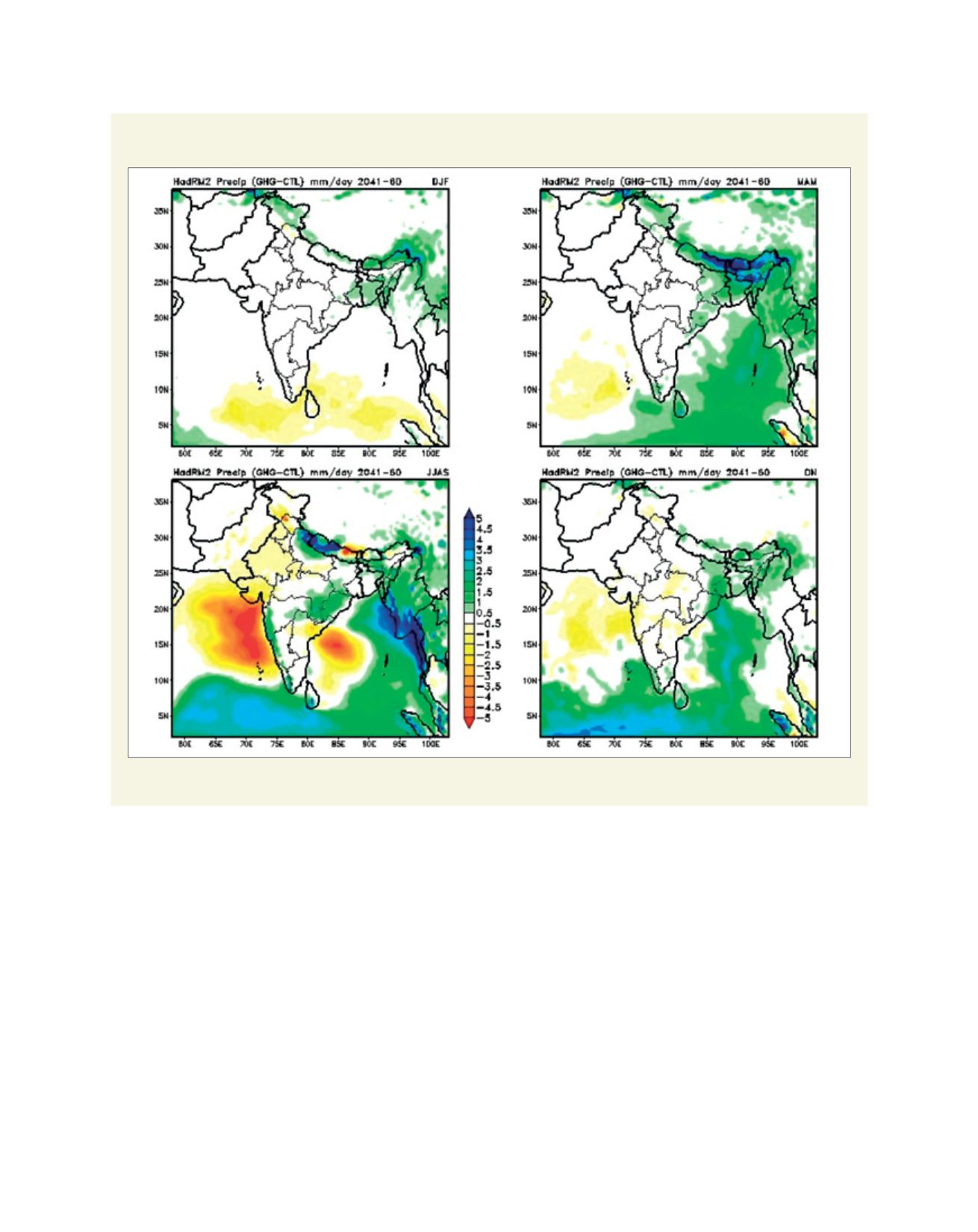

[
] 87
prepared in a systematic and planned manner, based on
climatic and water resource information:
• nationwide climate monitoring programme
• improved methods for accounting of climate-related
uncertainty for decision-making processes
• reassessment in the new climate scenario of water
availability and demands in all regions, particularly in
water-scarce regions
• re-examination of water allocation policies and
operating rules
• proper coordination among concerned organizations so
as to freely share the data, technology and experience
for capacity-building.
In addition, strategies such as the planning of land use, especially
in new land developments, are being considered. Areas where
water supply priorities are low can be planted with drought-
resistant varieties of trees. Knowledge of water requirements
for various crops and planting dates is integrated systematically
with water supply probabilities to develop planting strategies.
The selection of cropping patterns according to the availability
of water will reduce the adverse impacts of drought on potential
water-consuming crops. Plants suitable for water-scarce areas
could be those with a shorter growth period, high-yielding
plants requiring no increase in water supply, plants that can
tolerate saline irrigation water, plants with low transpiration
rates, and plants with deep and well-branched roots.
India became a signatory to the United Nations Convention
to Combat Desertification (UNCCD) on 14 October 1994 and
ratified it on 17 December 1996. The Ministry of Environment,
Forest and Climate Change is the nodal ministry in the
Government of India for UNCCD and the Desertification Cell
is the nodal point within the ministry to coordinate all issues
pertaining to the convention.
Rainfall projections for different seasons in India
Source: Bhattacharya, 2006
L
iving
L
and
















